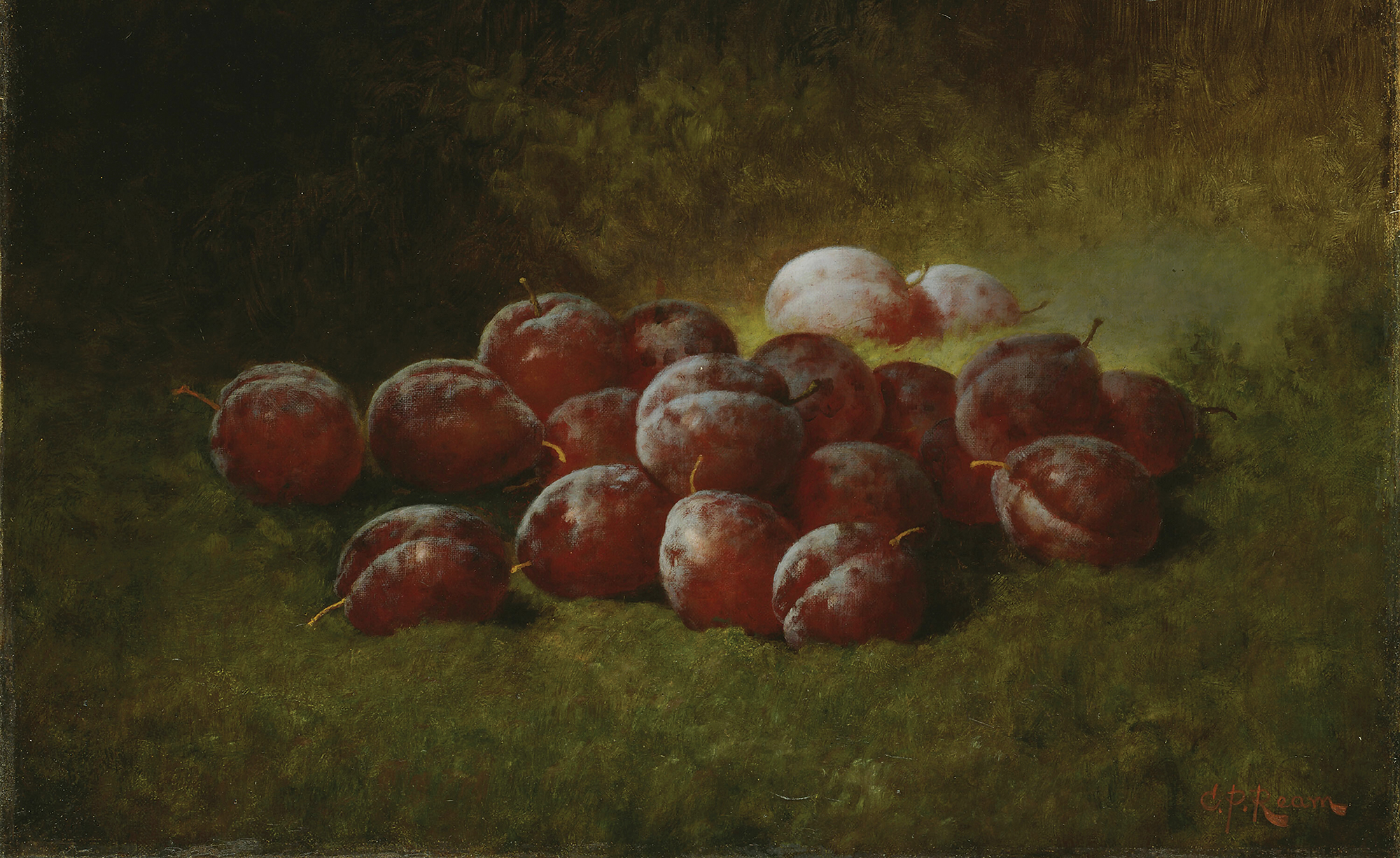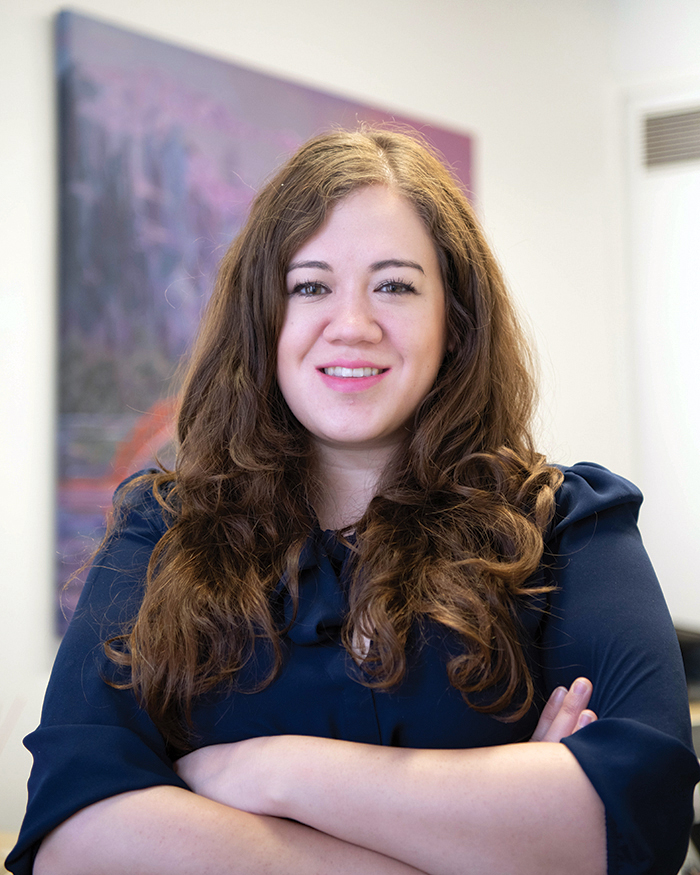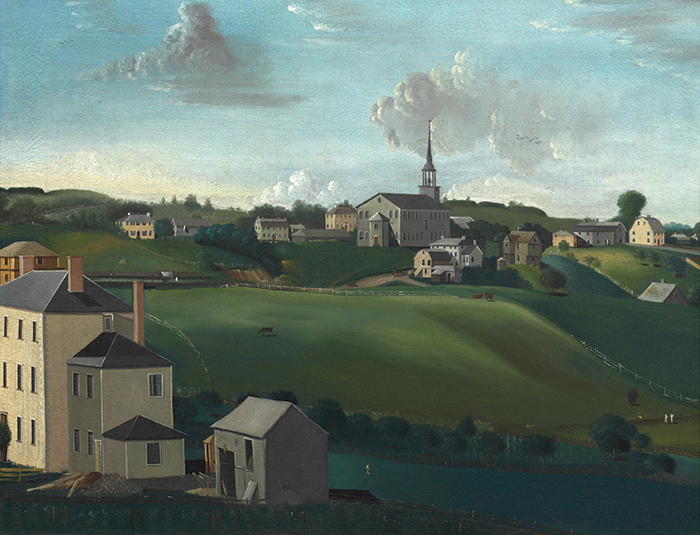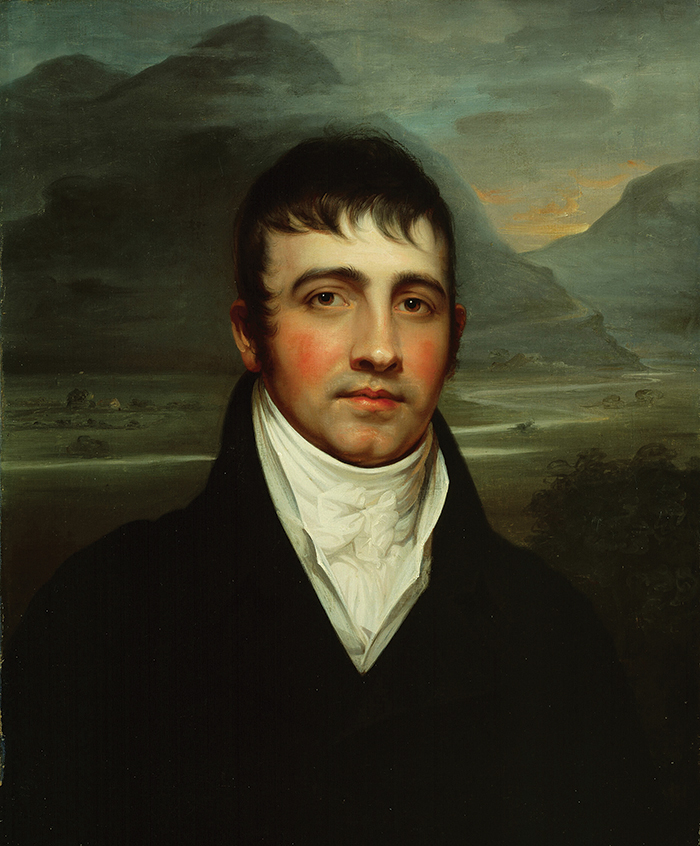
Purple Plums by Carducius Plantagenet Ream turned out to be one of the most forgettable artworks in a Brain Bridge Lab experiment. (Carducius Plantagenet Ream. Purple Plums, 1895. The Art Institute of Chicago.)
Memorability, says Wilma Bainbridge, isn’t only in the eye of the beholder.
You are a unique person. You were born and raised in a certain time and place. Growing up, you were shaped by your particular family, friends, teachers, community. You have your own ideas of what is interesting or uninteresting, attractive or unattractive.
Nonetheless, what you remember is not that personal. According to assistant professor of psychology Wilma Bainbridge, people tend to remember and forget the same things.
Bainbridge’s lab, the Brain Bridge Lab, studies memorability, “an intrinsic property to the stimulus that generalizes across observers,” as defined in one of her papers. Put simply, some images are more memorable than others. Whether you like them or not. And even if you’re not paying attention.
Bainbridge’s first work on memorability centered on human faces—an interesting topic of research, she says, because faces look so much alike. All share a broadly similar palette: “We don’t have blue faces.” The eyes, nose, and mouth are all in the same relative positions; no one has their mouth on their forehead like Mr. Potato Head.
You might imagine that the faces of people you love, or have seen often, would determine which faces you remember. But Bainbridge found that 50 percent of what influences our memory is the memorability of the face itself. This is the case even though “you and I have probably seen almost non-overlapping sets of faces growing up,” she says. We still find the same faces more memorable—or more forgettable.
It’s not a specific photo of someone that sparks the memory, Bainbridge’s project demonstrated: “If you’re memorable when you’re smiling, you’ll also be memorable when you’re looking away or making another expression.”
It’s also not related to physical beauty. “It’s not something easy, like attractive equals memorable,” Bainbridge says. “It’s something more complex than that.”

Bainbridge hasn’t yet figured out why certain faces and images are more memorable. Her current hypothesis is that memorable images are less work to process: there’s something about them that is “easy for the brain to latch on to,” she says. She hopes to discover “generalizable principles of memorability.”
But first, she had to prove the phenomenon of memorability exists at all. Other memory researchers were skeptical, believing that “personal experience should be the number one thing influencing our memories,” she says.
As Bainbridge—and other researchers—have dug into memorability, they’re finding the universality holds. In other experiments, young children and adults find the same images memorable, she says (the effect seems to kick in at age 4). “It works across cultures.” Monkeys, too, find some images more memorable than others.
Although Bainbridge doesn’t have a simple formula for memorability, she has plenty of data on memorable images. Based on that, her lab has created a neural network that can predict which images will stick. ResMem, a machine learning model developed by Coen Needell, AM’21, can assign a numerical memorability score to any image you upload to it.
Surprisingly, ResMem predicts memorability much better than actual humans do. In experiments, subjects are terrible at guessing what they will remember later. Even as someone who has studied memorability for more than a decade, Bainbridge admits, “I don’t have perfect intuition about it.”


If faces have intrinsic memorability, Bainbridge wondered, would the same hold true for artwork? Possibly this would be more influenced by personal taste.
To find out, Bainbridge ran an online experiment using the Art Institute of Chicago’s collection of paintings. Just as with faces, some paintings were more memorable.
Next Bainbridge took the experiment into the real world to test if memorability influenced the museum experience. Participants were asked to visit the Art Institute’s American Art wing, viewing the art in any order they wanted, as long as they saw each piece at least once. Afterward participants took a memory test on their phones. Same result: some pieces were more memorable. So memorable that ResMem could predict what people would remember.
Then finally—a radically interdisciplinary moment. The Brain Bridge Lab staged its own art exhibition/psychology experiment, to see if artists themselves had an intuition about what makes images memorable.
Trent Davis, AB’23, initially an undergraduate researcher and later lab manager in the Brain Bridge Lab, organized the show, called The Art of Memory, at Connect Gallery on 53rd Street in Hyde Park this past spring.
The lab had issued an open call for artists to submit original work. Entrants had to choose to enter each work in either the “most memorable” or the “most forgettable” category. The work was judged through an online memory experiment, similar to the lab’s previous research; study participants had no idea they were curating an art show.
Some of the artists who tried to create memorable pieces ended up placing in the most forgettable contest by accident. “They seemed a little upset,” Davis says.
Bainbridge has always loved coding and tinkering with computers. In college she thought she wanted to pursue robotics, but she was disappointed once she realized how little robots could do. So she shifted to neuroscience and psychology research, using a computational approach.
The internet has made much of her work possible. When Bainbridge wanted to investigate the memorability of faces, for example, she didn’t want to use existing databases. These relied on a convenient but not very diverse group of subjects: students. Young, mostly White, many of them conventionally attractive. And often the photos were very posed.
Instead Bainbridge created her own database of over 10,000 faces by scraping publicly available photos from Google Images. The result was a more representative database matching US demographics: half male, half female; diverse ages and races.
The internet has also allowed Bainbridge to conduct studies with larger, more diverse populations—not just the usual convenient students. Today psychology research is typically done with online platforms such as Prolific, which has hundreds of thousands of potential research participants.
Having access to a large, diverse set of participants could make the results not only more accurate but also easier to replicate—a counter to the replication crisis in social sciences research that began to be recognized in the 2010s. “That’s one of the motivating factors for why we did our studies online,” Bainbridge says.
It’s hard to argue that memorability is not a thing when thousands of people agree about what’s most memorable.
Not only are humans not unique in what we remember, we’re also not unique in what we misremember, a phenomenon known as the Mandela effect. This phenomenon was popularized by paranormal researcher Fiona Broome, who in 2009 reported having vivid memories of news coverage of Nelson Mandela dying in a South African prison.
In fact, Mandela was released in 1990, served as South Africa’s president, and died in 2013. Broome reported that hundreds of other people had the same false memories and speculated they could be evidence of a parallel reality.
Conspiracy theorists had a field day. Bainbridge was the first to use the phenomenon to try to figure out how memory works.
Her research on the Mandela effect examined the false visual memories that many people strangely share. A well-known example is the Monopoly man, the mascot of the board game Monopoly. Close your eyes and picture him. Does he have a monocle?
He does not. But many people remember him that way.
The Mandela effect is not caused by looking at incorrect versions of the image, Bainbridge discovered. Her research found that when shown a picture, then tested just a few minutes later, many people would draw a monocle on him. Something is happening in your memory within a very short time span.
This is what Bainbridge is trying to understand: what occurs in between seeing something and remembering it. The bridge between perception and memory. The brain bridge of the Brain Bridge Lab.
So why is our memory so unreliable? Can anything be done?
Bainbridge’s primary advice—if there’s an event coming up that you really want to remember, for example—is to off-load it. Use a memorable picture in your calendar, for instance.
To preserve personal memories, she’s a fan of technology like the app 1 Second Everyday. Users record a second-long snippet of video daily, and the app compiles them into a jumpy little home movie: a year of one-second clips is about six minutes long. This is how Bainbridge is preserving her memories of her two-year-old twin daughters.
For one of her experiments she recruited people who had been using the app for years. Their brains were scanned while they watched their own autobiographical footage.
Previous memory studies participants had been brought into a lab, shown images “they don’t really care about,” and then tested on their memory of the random images. Bainbridge’s research, by contrast, looked at the brain while it processed memories from 1 Second Everyday that were personally significant. The results: “We were able to find this new map of content in the brain that hadn’t been identified before,” she says.
“One neuron doesn’t just belong to one memory,” Bainbridge told UChicago’s Big Brains podcast this past May. “It might fire from multiple different memories, and it might code different aspects of those different memories.”
Despite her area of expertise, Bainbridge’s own memory is no better than anyone else’s. “I think I’m more cognizant of the ways in which memory can fail,” she says. “I just know how fallible memory is.” She relies heavily on notes, screenshots, calendars, and other memory aids.
Many of us complain about our poor memories, but “on the flip side, you wouldn’t want to remember everything,” Bainbridge says. “It’s actually really adaptive for our brains to be able to filter down information. I think some of what memorability is, is tapping into that filtering.”
